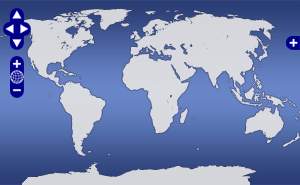Seismic P-wave velocity models (netCDF format) for the Chicxulub Crater area (96L676, 1996)
These two-dimensional seismic P-wave velocity models are derived from inversion of ocean bottom and land seismic data collected in the Chicxulub Crater area during 1996 R/V Longhorn cruise 96L676. A second vessel, GECO Sigma, fired airguns to the OBS and land seismometer instruments. The velocity files are in GMT-compatible netCDF grid format with grid parameters as follows: The x-coordinate is profile distance in km (grid interval 1.0 km), the y-coordinate is depth in km below the sea surface (grid interval 0.1 km), and the z-values are P-wave velocities in km/s. The grid files with "tomo" in the name are velocity models obtained from tomographic inversion. These are illustrated in Plate 2 of Christeson et al., 2001. The grid files with "deep" in the name are velocity models used for Moho inversion. The files with "mask" in the name are masked to show only regions with ray coverage. The data set was generated as part of the project called Structure of the Chicxulub KT Impact Crater, Yucatan, Gulf of Mexico, with funding from NSF award OCE94-15716.
Christeson, Gail
Investigator
UTIG
Nakamura, Yosio
Investigator
UTIG
Buffler, Richard T.
Investigator
UTIG
Morgan, Joanna
Investigator
Imperial College London
Warner, Michael
Investigator
Imperial College London
Device Info
Seismic:
Platform
Longhorn (Array)
UT:Marine Science Institute
Awards
Data DOI
Quality
2
The data have been processed/modified to a level beyond that of basic quality control (e.g. final processed sonar data, photo-mosaics).
Data Files
References
Acquisition Information
Documents
Data Citation Information
ISO/XML Metadata
Expand

 Map View
Map View

